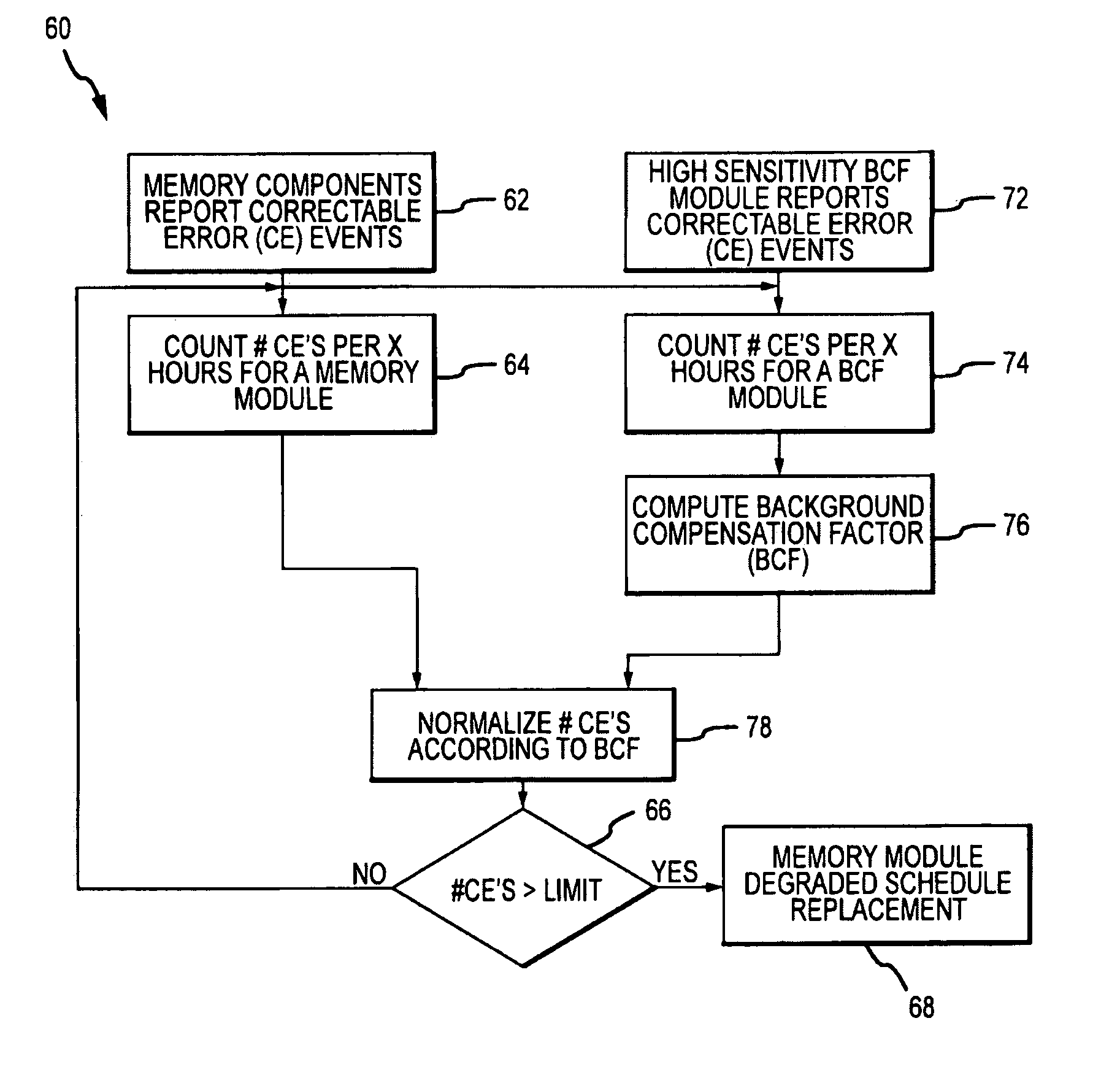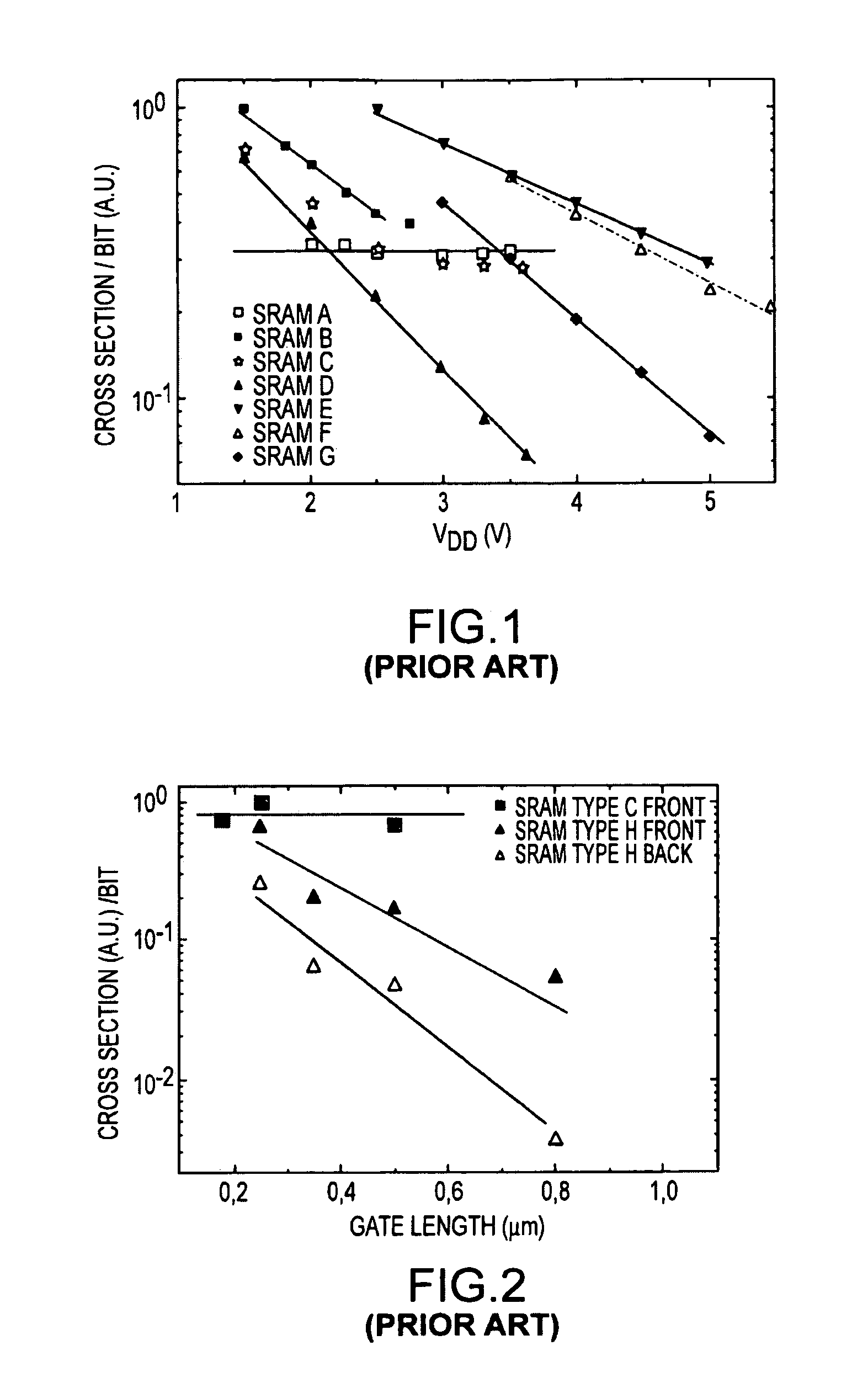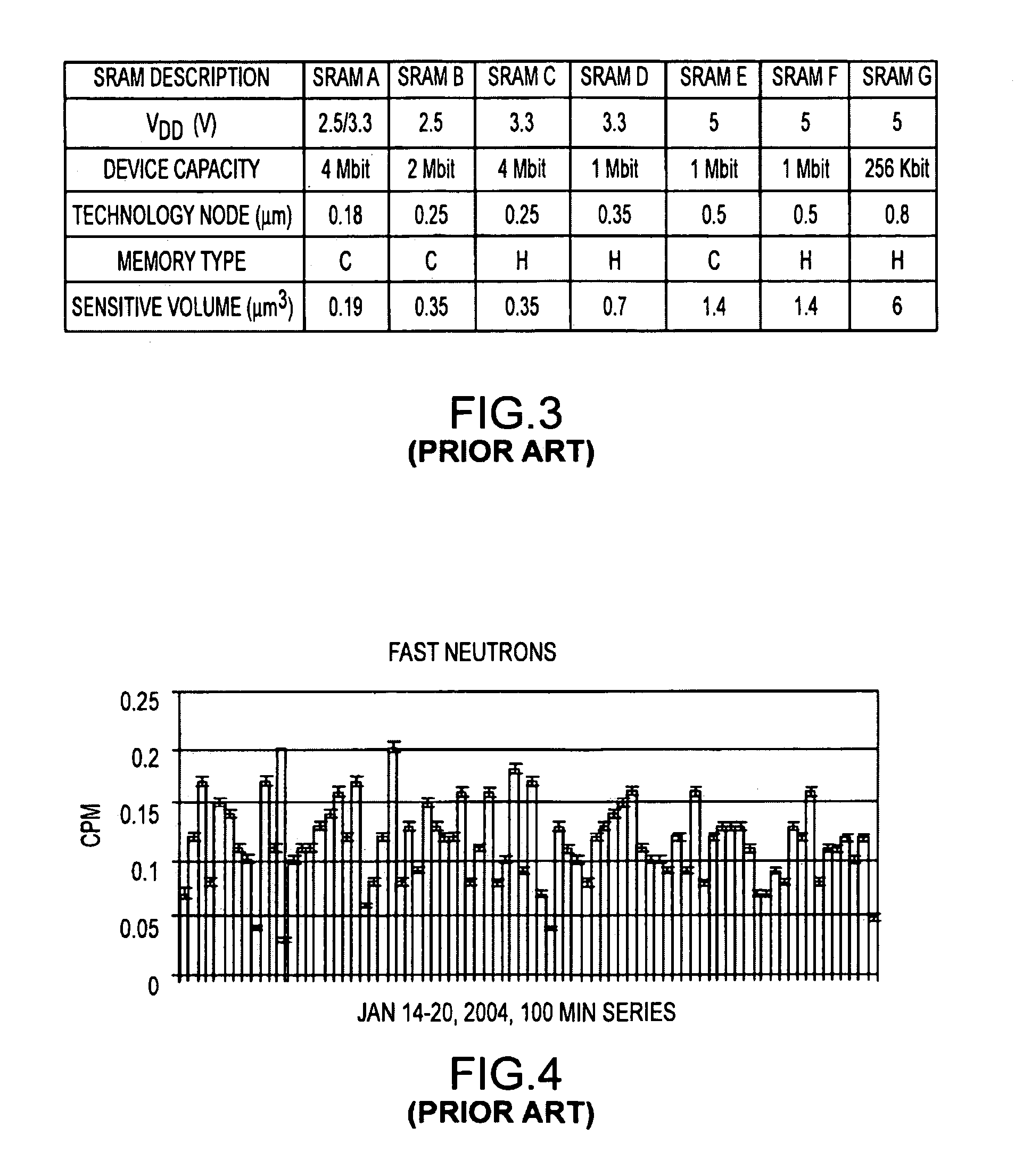Dynamic self-tuning soft-error-rate-discrimination for enhanced availability of enterprise computing systems
- Summary
- Abstract
- Description
- Claims
- Application Information
AI Technical Summary
Benefits of technology
Problems solved by technology
Method used
Image
Examples
Embodiment Construction
[0021]According to an embodiment of the present invention, a computer system is provided with individual SRAMs (one per monitored computer or computer system) that have been deliberately tuned to maximize the sensitivity to cosmic neutron events. Although the following description refers to special SRAMs that have been tuned for increased sensitivity to cosmic neutron events, any integrated logic circuit or integrated circuit memory device could be similarly tuned.
[0022]The sensitivity tuning of the SRAMs is achieved via a bivariate, double-exponential sensitivity enhancement. The cross section (probability) for cosmic neutron events increases exponentially with 1 / Voltage, and exponentially with 1 / Gate_Length, as is explained in greater detail below. For the high-sensitivity SRAMs, a continuous write / read algorithm is applied thereto to infer instantaneous CE rates; then the CE rate of the ultra-sensitive SRAMs is used to generate a dynamic “Background Compensation Factor” (BCF).
[00...
PUM
 Login to View More
Login to View More Abstract
Description
Claims
Application Information
 Login to View More
Login to View More - R&D
- Intellectual Property
- Life Sciences
- Materials
- Tech Scout
- Unparalleled Data Quality
- Higher Quality Content
- 60% Fewer Hallucinations
Browse by: Latest US Patents, China's latest patents, Technical Efficacy Thesaurus, Application Domain, Technology Topic, Popular Technical Reports.
© 2025 PatSnap. All rights reserved.Legal|Privacy policy|Modern Slavery Act Transparency Statement|Sitemap|About US| Contact US: help@patsnap.com



